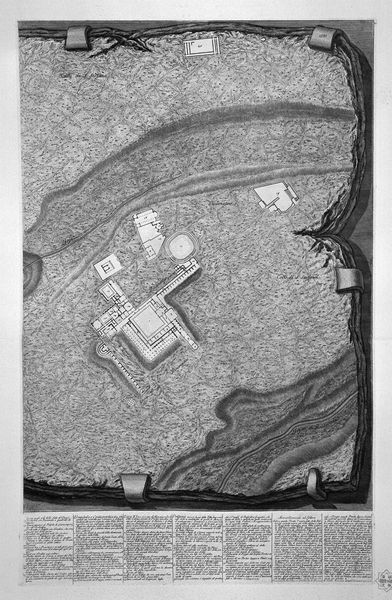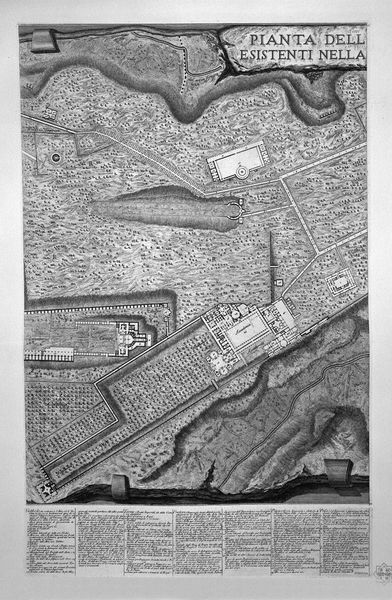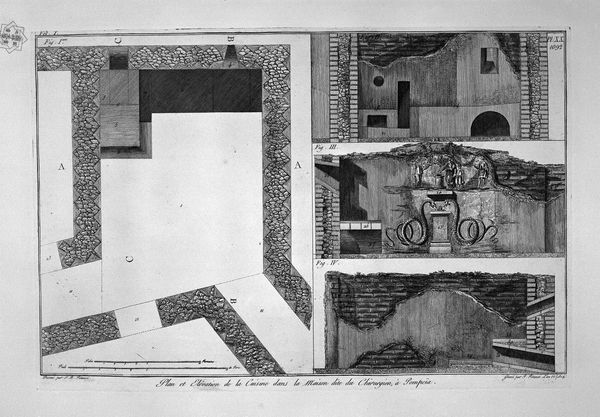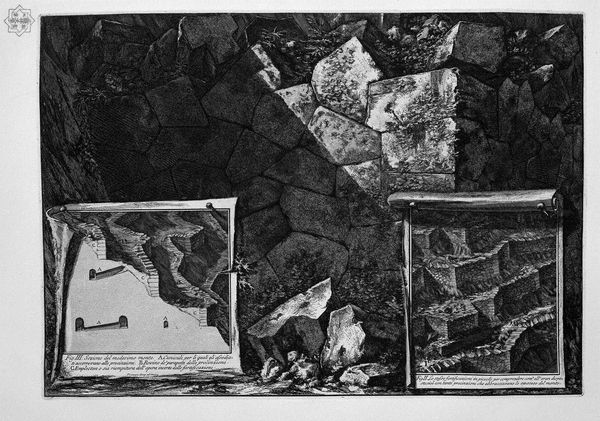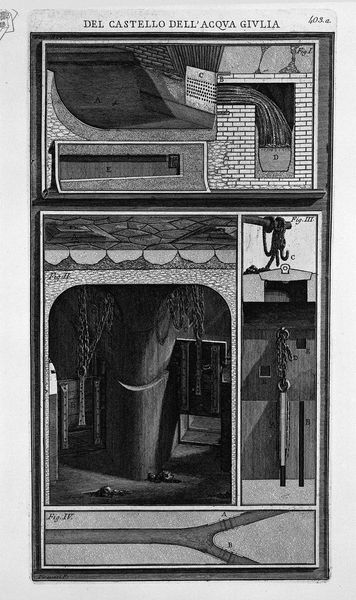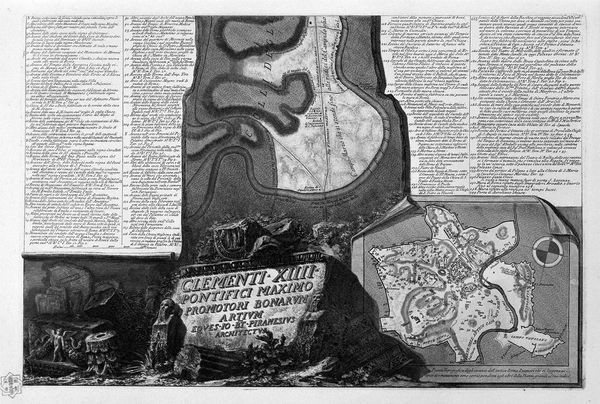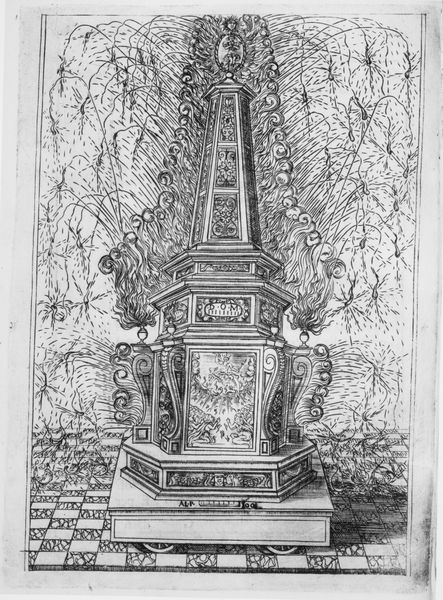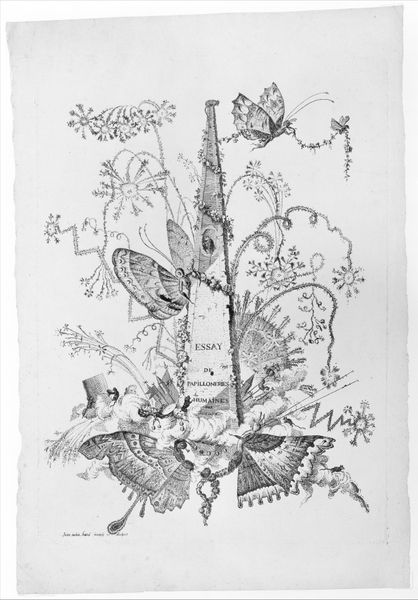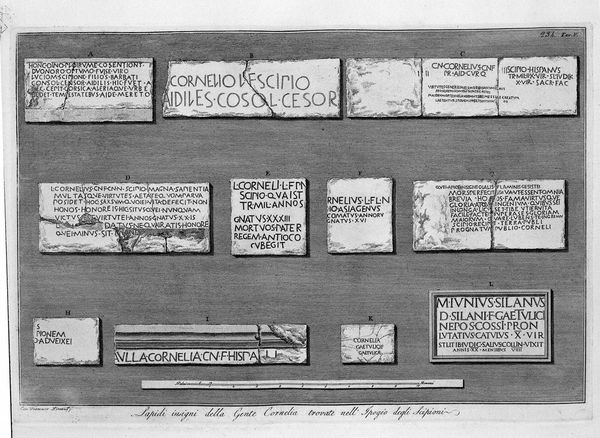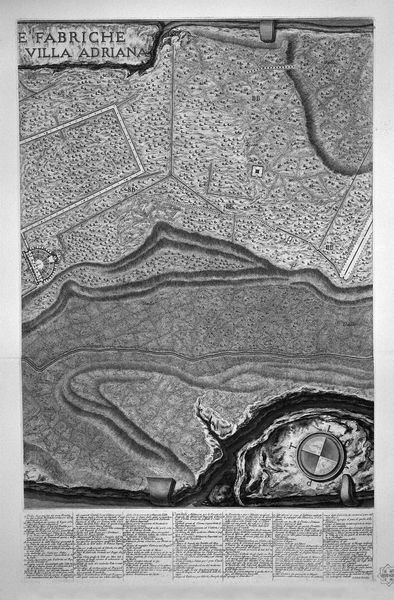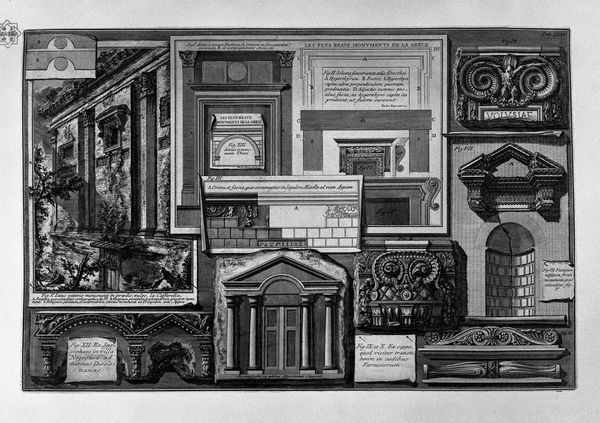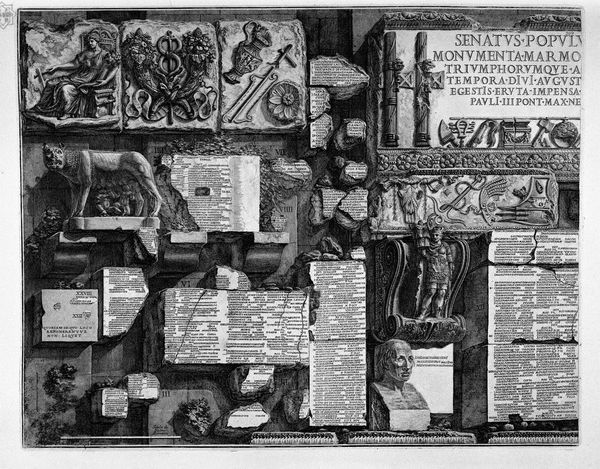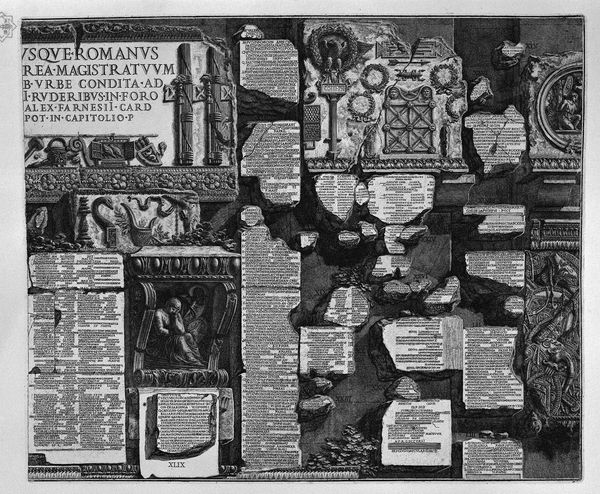
Plan of the existing factories in the Villa Adriana, with a dedication to St. M Stanislaus Augustus, King of Poland
0:00
0:00
drawing, print, etching, engraving, architecture
#
drawing
#
neoclacissism
# print
#
etching
#
landscape
#
perspective
#
form
#
text
#
romanesque
#
geometric
#
arch
#
limited contrast and shading
#
line
#
cityscape
#
history-painting
#
academic-art
#
engraving
#
architecture
Copyright: Public domain
This is Giovanni Battista Piranesi’s print “Plan of the existing factories in the Villa Adriana, with a dedication to St. M Stanislaus Augustus, King of Poland.” Piranesi was an eighteenth-century Venetian artist, known for his etchings of Roman antiquities. Piranesi made this print in Rome. His work reflects the eighteenth-century obsession with classical antiquity and the rise of archaeology as a science. But more than this, it shows the way art became tied to the social prestige of the burgeoning museum culture. The print is dedicated to the King of Poland. This speaks to the culture of patronage and the political function of art in this period. The king's patronage would lend credibility and financial support to Piranesi's endeavors. It reveals the way art was not just about aesthetics, but was also a tool for social networking and economic survival. To understand this artwork, one might look at the history of archaeology, the rise of the museum, and the social conditions of artistic production in eighteenth-century Italy. Art is always embedded in a specific time, place, and set of social relations.
Comments
No comments
Be the first to comment and join the conversation on the ultimate creative platform.
